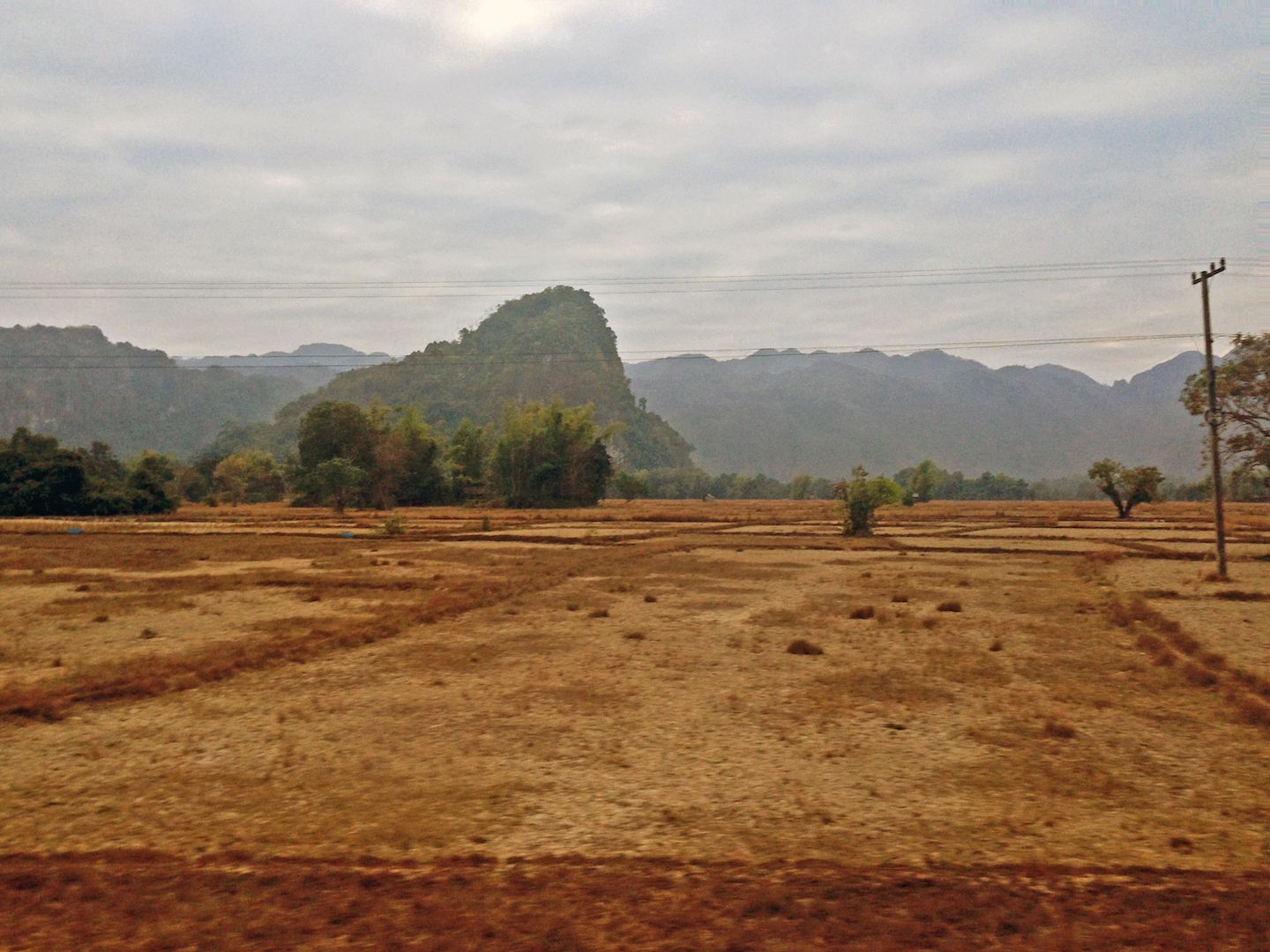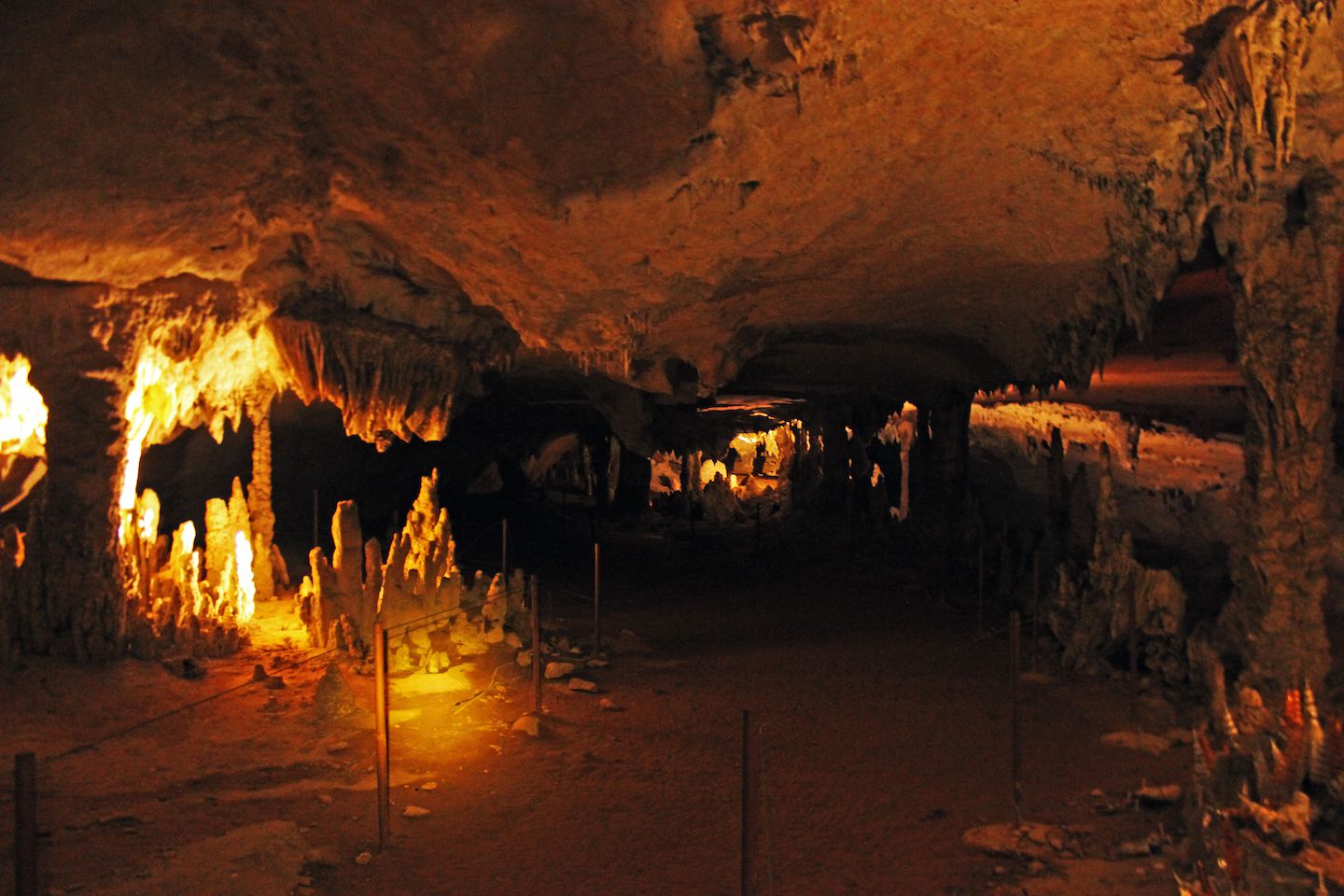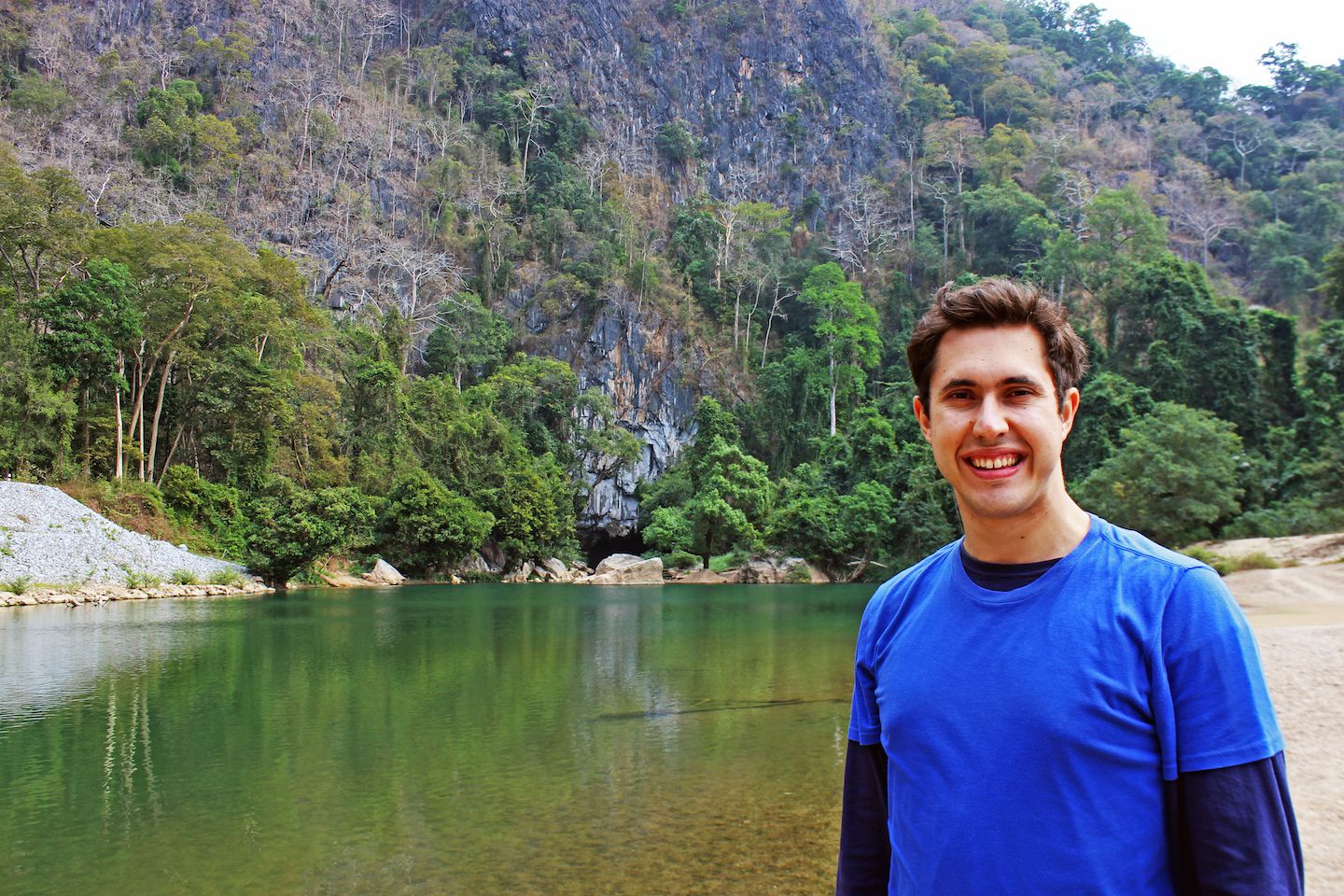As we’ve realized from our first few days in Laos, this country will be more about the natural adventures and not so much the city sights. After Vientiane, we headed to the remote Konglor Village in the central south part of Laos, home to Konglor Cave. A 7km (4.3 miles) long cave carved in the limestone mountains, Konglor Cave has a full river passing through it. The boat ride through the cave has been said to be one of the highlights in all of Laos and we couldn’t pass up the opportunity to experience it for ourselves.
It was a long way from Vientiane. Having said that, we were just happy that the 300km journey only took 8 hours, while Luang Prabang to Vang Vieng had taken the same amount of time for only 100km. The roads were the nicest we had seen in Laos so far, much straighter and flatter, though still dusty with potholes. When we finally arrived in Konglor Village, it was literally in the middle of nowhere Laos. It was a bit of a stretch to describe the place as a village. There was only one road with rice fields and limestone mountains around us (but not the same as the limestone mountains in Ha Long Bay). I wouldn’t be surprised if it was the most remote place I had ever been.

We scouted out accommodations options (not that there were many) and settled on one that was clean and had electricity. Dinner was at the one place that everyone seemed to end up eating at, and they cooked decent meals. The night was surprisingly chilly so we packed on the thickest clothes we had – thin hoodie and rain jacket for me, long-sleeve t-shirt and rain jacket for Carlos. By 8:30pm we were in bed as there was nothing else to do except get some rest for the early start to the next day.

We woke up at 6:30am (it wasn’t even that hard considering how early we slept), had breakfast at the same restaurant and headed for the cave. If we were worried about getting lost, we needn’t have – it was at the end of the only road in the village, about 15 minutes walk away. The path among the rice fields was admittedly quite nice and the limestone mountains rose sharply in the background. It was very different from the rice fields of Sapa.

Entering Phou Hin Bun National Park (2000 kip per person entrance fee), we kept walking until we reached the pier, where the boats into the cave were located. We bought tickets for 2 people (100,000 kip for the boat + 20,000 entrance to the cave, 10,000 kip each) that came with life jackets and headlights. We brought our own Havaianas. The entrance to the cave was very scenic – lush green of the surrounding forest in contrast with the dark tones of the mountain and the clear blue sky.

We felt that we “officially” entered the cave when the temperature went up significantly and darkness took over. At this point we turned on our headlights and followed our boat driver to pick up one of the many motorized boats parked by the entry. Wading through the river to board the boat, we trusted our driver to navigate the dark and treacherous waters of the river. As we began sailing through the cave, we saw what many have described online that you can’t imagine without seeing it for yourself – the scale of the cave was incredible. The cave was huge, at points more than 50m high. The river felt like a real river, not just a small stream that you would typically expect inside a cave.

During most of the 3 hour round trip boat ride, all the light we had came from our headlights. In what looked like a tiny symphony of lights, the beams danced in front of us while we turned our heads to examine the cave contours and rocks coming out of the river. Since the only thing we could see at any given time was where our headlights were directed, there was a great sense of mystery and intrigue. Each new small section of the cave was a surprise, a discovery, a thrill.

On several occasions, especially during dry season, the boat hit the rocks on the riverbed, which was both fun and scary. The first time this happened, there was a part of the cave that had lights and could be explored on foot. We got out of the boat and walked through the many stalactites and stalagmites. I felt like we were exploring untouched nature, discovering a whole new part of the world. This was reminiscent of Surprising Cave in Ha Long Bay, but it seemed much bigger and more authentic. We eventually met up with our boat driver on the other side and continued the journey.

The path became more treacherous, as the river turned sharply inside the cave. We got off and got back on the boat for a few more shallow water encounters, including one over a small waterfall. We were super impressed with our boat driver’s skills. After an hour driving inside the cave, we finally saw the light at the end of the tunnel, which opened to a lush green jungle and an area with four stalls manned by a few locals. Travelers can hike from here to another village, but we chose to head back.

Even though we knew what to expect on the way back, it was equally exciting and beautiful because there was always a new part of the cave to uncover. We arrived back to the pier at the National Park at around 11:30am, satisfied that we explored Konglor Cave like we wanted to. Before heading back and away forever, we took some time to appreciate our final views into the cave.

Konglor Cave was definitely one of the highlights in Laos. It was far from your average cave with its size and complexity. I’ve never heard of such a wide river running through such a long cave anywhere else. Konglor Cave epitomizes the best of Laos travel – natural, unspoiled, and like their slogan says, “simply beautiful.” While it was the most remote place we have ever been, that also meant it wasn’t swarming with tourists. There was a real explorer feel, which is more and more rare these days as tourist attractions become ever more accessible to everyone. In the end, we were glad we took the long journey from Vientiane. It was totally worth it and we will surely talk about this place for many years to come.
For more pictures from Konglor Cave, please visit the gallery!

